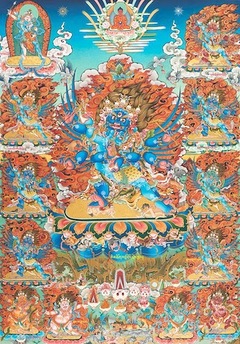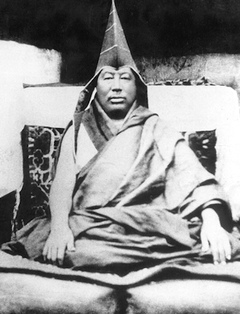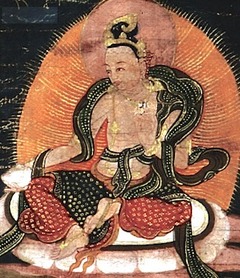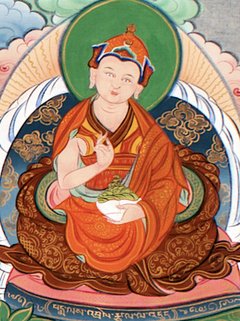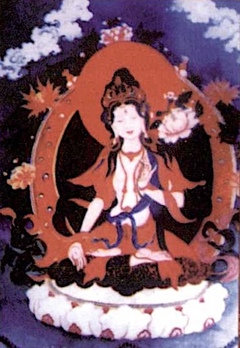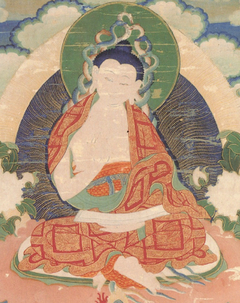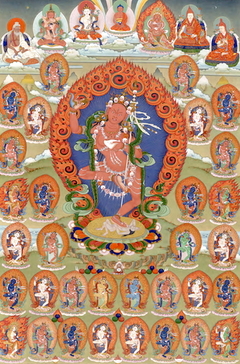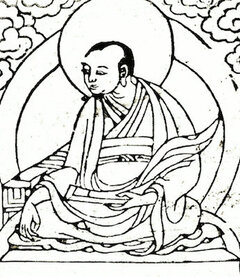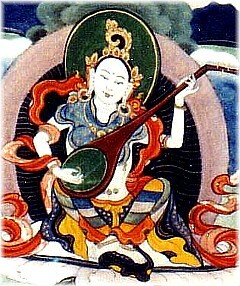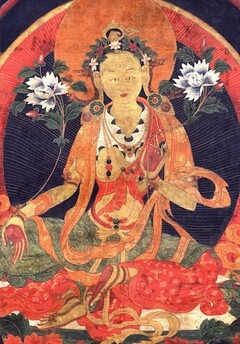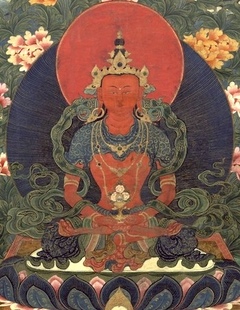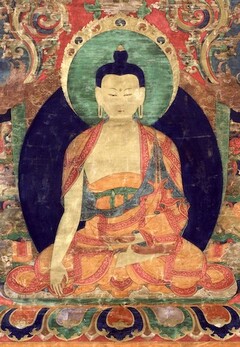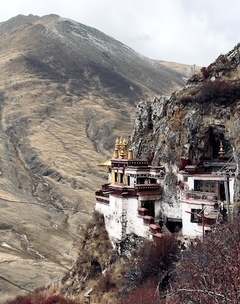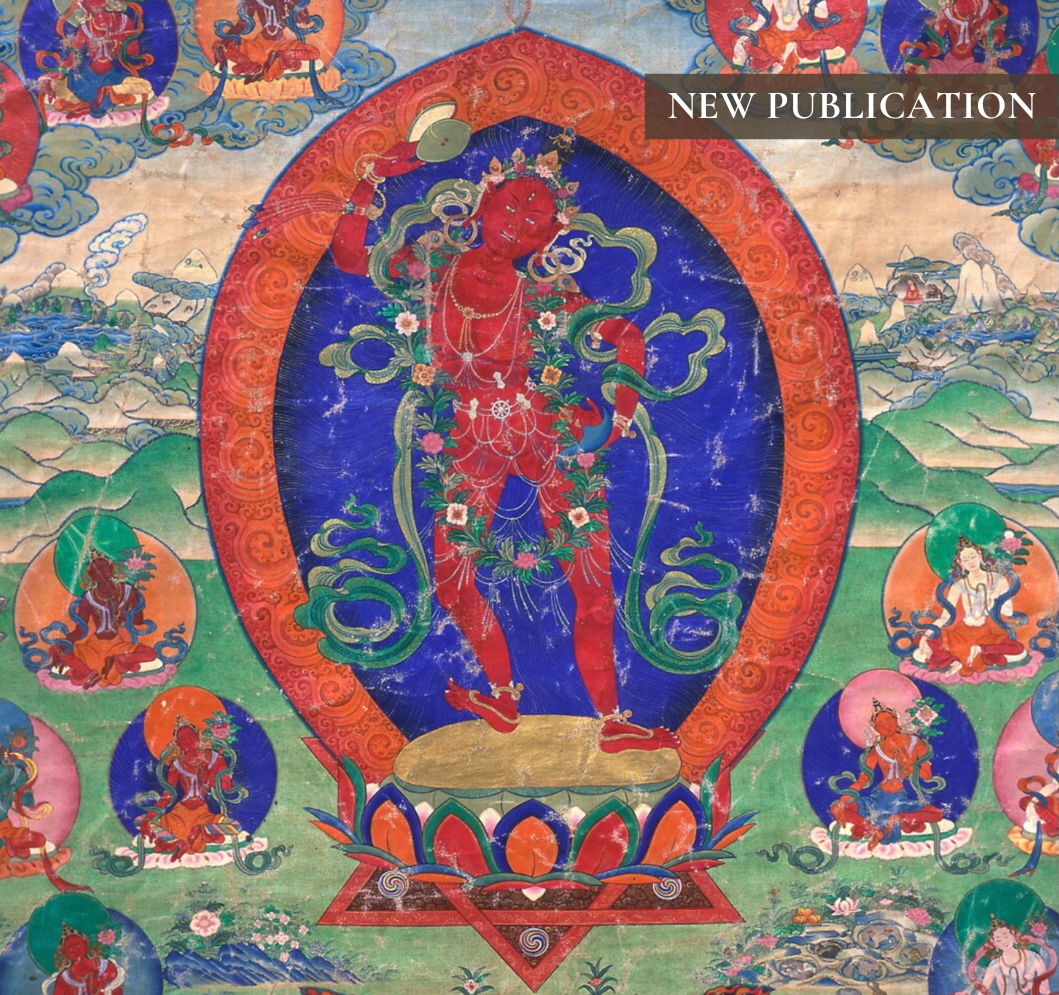
This inner practice of Yumka Dechen Gyalmo from the Longchen Nyingtik includes twenty-one forms of activity, such as increasing intelligence, extending longevity, and eliminating obstacles, all linked to the Twenty-One Tārās and the corresponding verses of the famous Praise to Tārā with Twenty-One Verses of Homage.
From the master's detailed guide to meditating in retreat on each of the major sādhanas of the Longchen Nyingtik, this second part covers Palchen Düpa (Gathering of Awesome Ones) and offers advice on such topics as preparing the location, setting up a shrine, chanting the liturgy, and playing a bell and drum.
Verses outlining what Khenchen Ngawang Palzang says he has understood about the view of the Nyingma School of Early Translations, together with warnings about the dangers of partiality and polemicizing.
The first of six tantras of 'liberation through wearing'—takdrol (btags grol) in Tibetan—included in the Khandro Nyingtik collection.
A brief explanation of the yoga of meditation under six headings, which includes an explanation of how to divide the day and night into ten sessions.
Other recent additions
This three-verse praise or prayer to Ārya Tārā is especially poignant in view of the fact that Gendün Chöpel prayed to the Savioress during his imprisonment and attributed his eventual release to her blessings and grace.
This Mahāyāna aspiration prayer in sixteen stanzas, which is attributed to the great Indian master Nāgārjuna, is included within the Tengyur (Toh 4385).
This aspiration, extracted from the Vajravārāhī feast offering in the Five Cycles of the Heart-Essence of the Mahāsiddha (Thangtong Gyalpo), is included among the Narak Dongtruk confessional practices in the Rinchen Terdzö.
This version of the Seven Points of Mind Training, which is included in the Damngak Dzö collection, accords with the commentary by Gyalse Tokme Zangpo (1297–1371)—in its sequence of the slogans and in its annotations.
A five-verse poem in praise of Sarasvatī, the goddess of eloquence, which includes an appeal for her assistance in banishing ignorance and developing intelligence.
Sera Khandro—here using the name Kalzang Drönma—tells us that she composed this prayer at the behest of Tulku Drimé Özer. Nevertheless, it is included in her revelation, the Reality Ḍākinīs’ Secret Treasury (Chönyi Khandrö Sangdzö).
Highlights from Archive
In a series of poetic verses, Chatral Rinpoche (1913–2015) explains the purpose and benefit of saving the lives of endangered animals, especially those due to be slaughtered, as it is a practice of protection from harm and an expression of universal compassion.
Trulshik Rinpoche compiled these brief verses of praise and mantras so that all those connected with him could recite them daily or on special occasions. The deities included are Buddha Śākyamuni, Vajrasattva, Amitāyus, Amitābha, Ratnaśikhin, Medicine Buddha, Maitreya, Avalokiteśvara, Mañjuśrī, Vajravidāraṇa, Vijayā, Tārā, Guru Padmasambhava, and the union of Hayagrīva, Vajrapāṇi and Garuḍa.
Featured Topic
Texts on the theme of retreat and solitude, including advice for three-year retreatants and a guide to the optimal environments and dwelling places for cultivating meditative concentration.
11 texts
* Lotsāwa ལོ་ཙཱ་བ་; lo tsā ba n. Title used for native Tibetan translators who worked together with Indian scholars (or paṇḍitas) to translate major buddhist texts into Tibetan from Sanskrit and other Asian languages; it is said to derive from lokacakṣu, literally "eyes of the world". See also paṇḍita.
Lotsawa House is registered in the UK as a Community Interest Company (#14358325), a category of company which exists primarily to benefit a community or with a view to pursuing a social purpose, with all profits having to be used for this purpose.

